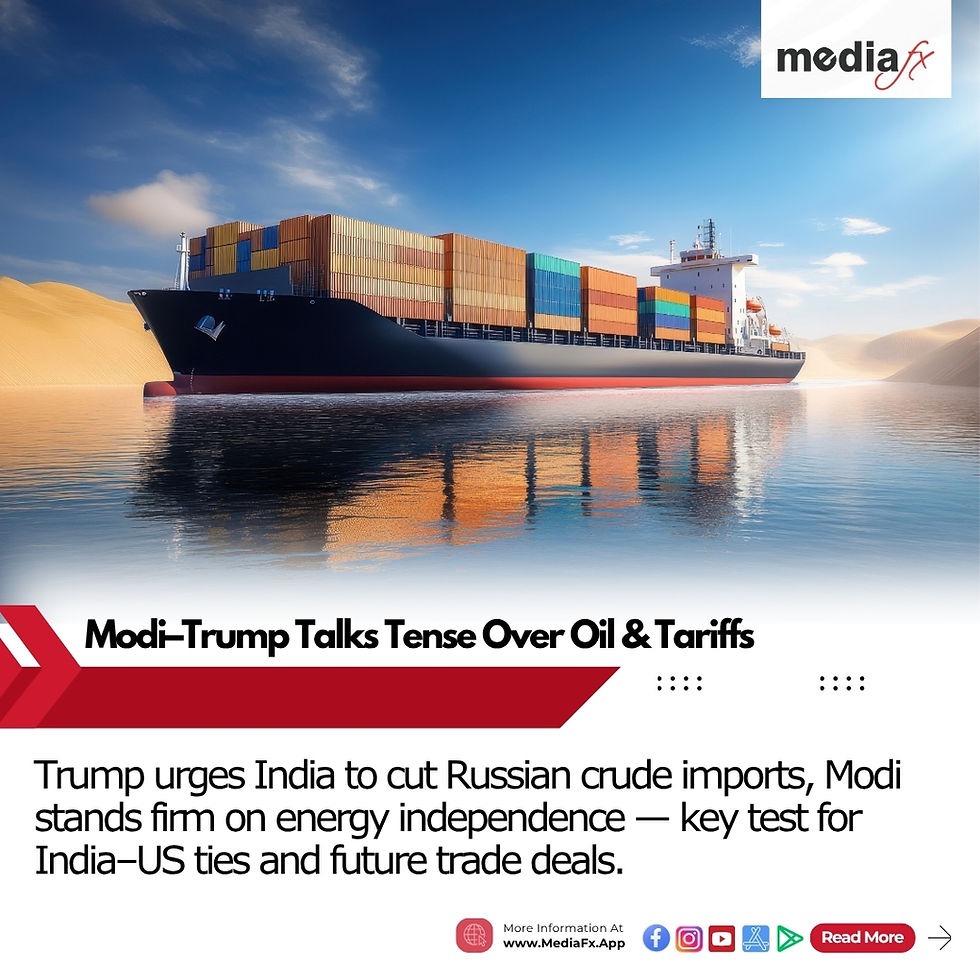🛑 Trump Slams India Over Trade Again! 🇺🇸
- MediaFx

- Aug 8
- 2 min read
TL;DR:Donald Trump has reignited his "tariff king" attack on India, accusing Modi’s government of unfair trade. He promises steep 50% tariffs if re-elected. But what does this mean for Indian exports, jobs, and youth dreams of working in the US?

What Happened?At a campaign rally on 6 August 2025, Donald Trump accused India of “cheating the US” with high import duties. He called India the “tariff king” and said if he returns to power, he will impose 50% tariffs on Indian steel, aluminium, and more.
He claimed countries like India are “ripping off” America through bad trade deals. His tone was combative, aimed at energizing his voter base with the usual "America First" rhetoric.
Flashback / ContextTrump has attacked India on trade before. In 2019, he withdrew India from the Generalized System of Preferences (GSP), affecting ₹42,000 crore worth of tariff-free exports.
But India is now a key trade partner for the US. In 2024, total trade between the two countries hit $118 billion (USTR data). Despite this, Trump’s message hasn’t changed—tariffs are his go-to solution to global trade competition.
Who Gains & Who Loses?Winners:
US steel and manufacturing lobbies get more protection.
Losers:
Indian exporters—especially small businesses and textile firms.
Indian students and tech workers with US dreams.
US consumers who may pay more for Indian goods.
The Modi government hasn’t officially responded yet.
Why It Matters for Indian Youth
Tech Jobs & H1-B Visas: Trump’s rhetoric might lead to tightened rules on outsourcing and foreign hiring.
Startups & D2C Brands: Young brands exporting to the US will face cost pressures.
Students & Professionals: Trade tensions can impact education choices, visa rules, and job placements.
Indian Economy: Tariffs could slow down export-driven growth, which directly affects employment and wages.
A user on X (formerly Twitter) put it bluntly:
“Trump is campaigning on our backs. Hope Delhi knows how to respond without drama.” – @PolicyWonkDesi
MediaFx TakeTrump’s speech is less about India and more about his US election strategy. But India’s response must be smart, not reactive. This is the time to:
Invest in homegrown manufacturing
Reduce export dependency on US markets
Shield young entrepreneurs and job creators from external shocks
When world leaders play trade chess, the youth economy can’t be treated like pawns.













































